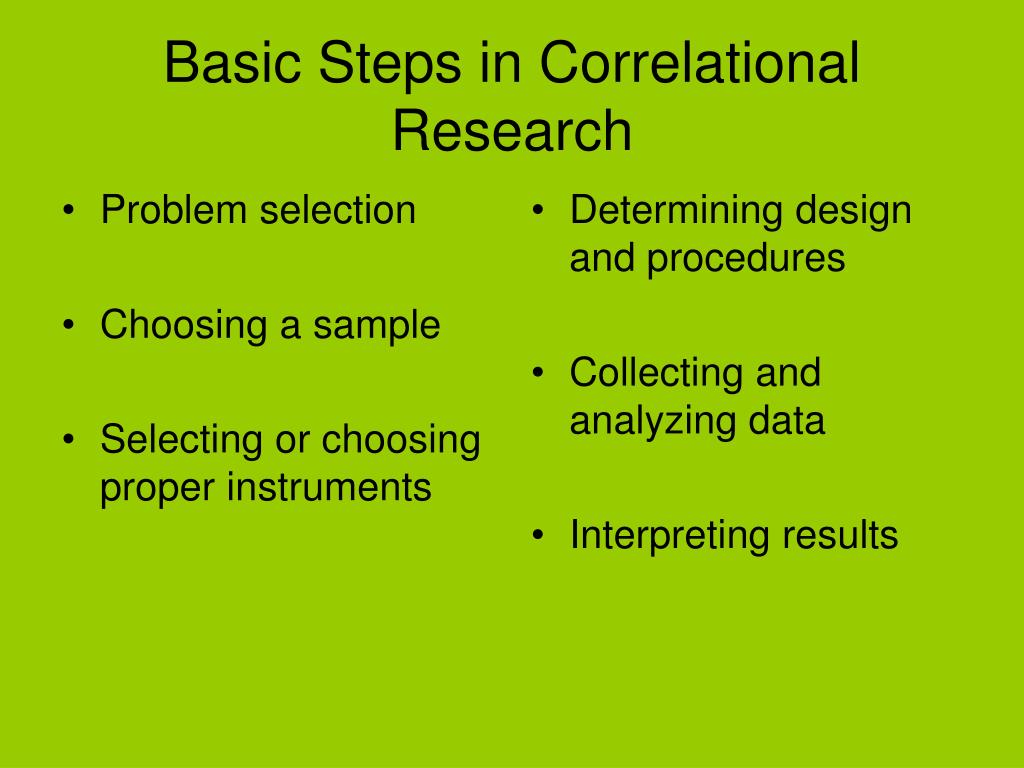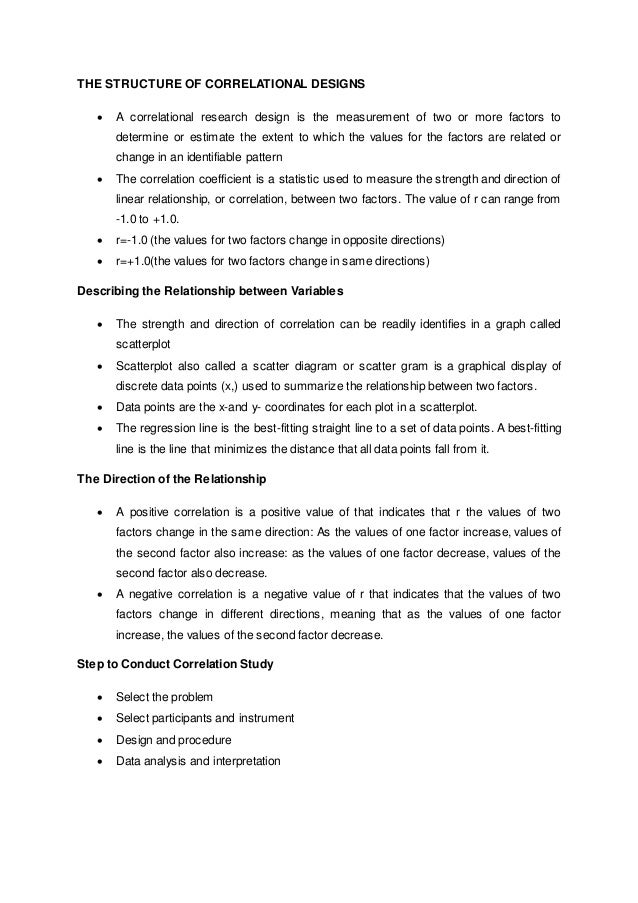Table Of Content

In marketing, correlational studies are instrumental in understanding consumer behavior, identifying market trends, and optimizing marketing strategies. By examining correlations between various marketing variables, researchers can uncover insights that drive effective advertising campaigns, product development, and brand management. For example, a business correlational study might investigate the relationship between employee satisfaction and customer loyalty in a retail setting. By surveying employees to assess their job satisfaction levels and analyzing customer feedback and purchase behavior, researchers can determine whether higher employee satisfaction is correlated with increased customer loyalty and retention. For example, suppose a correlational study utilizes self-report measures of depression and anxiety.
Observational Research – Methods and Guide
Assume, for example, that there is a strong negative correlation between people’s age and their enjoyment of hip hop music as shown by the scatterplot in Figure 6.6. However, if we were to collect data only from 18- to 24-year-olds—represented by the shaded area of Figure 6.6—then the relationship would seem to be quite weak. For example, if age is one of your primary variables, then you can plan to collect data from people of a wide range of ages.
Explanatory Research – Types, Methods, Guide
With Appinio, conducting correlational research becomes even more seamless and efficient. Our intuitive platform empowers researchers to gather real-time consumer insights in minutes, enabling them to make informed decisions with confidence. Each data point on the plot represents the values of both variables for a single observation. By plotting the data points on a Cartesian plane, you can visualize patterns and trends in the relationship between the variables.
How Is Correlational Research Conducted?
Surveys for correlational research involve generating different questions that revolve around the variables under observation and, allowing respondents to provide answers to these questions. In experimental research, the researcher introduces a catalyst and monitors its effects on the variables, that is, cause and effect. In correlational research, the researcher is not interested in cause and effect as it applies; rather, he or she identifies recurring statistical patterns connecting the variables in research. For example, the 2 variables can have a negative correlational relationship for a period of time, maybe 5 years. After this time, the correlational relationship between them can become positive; as observed in the relationship between bonds and stocks.
IV. Chapter 4: Psychological Measurement
As such, correlational studies face the same challenges as comparative studies in terms of their internal and external validity. Of particular importance are the issues of design choices, selection bias, confounders, and reporting consistency. As you have learned by reading this book, there are various ways that researchers address the directionality and third-variable problems.
Correlation Studies in Psychology Research
A correlational study is a type of research design that looks at the relationships between two or more variables. Correlational studies are non-experimental, which means that the experimenter does not manipulate or control any of the variables. Different types of correlation coefficients might be appropriate for your data based on their levels of measurement and distributions. The Pearson product-moment correlation coefficient (Pearson’s r) is commonly used to assess a linear relationship between two quantitative variables. It doesn’t imply causation but measures the strength and direction of association. Statistical analysis determines if changes in one variable correspond to changes in another, helping understand patterns and predict outcomes.
4. Case Examples
Costly vows, uncertain future: Study shows correlation between wedding spending and divorce rates - The Economic Times
Costly vows, uncertain future: Study shows correlation between wedding spending and divorce rates.
Posted: Mon, 07 Aug 2023 07:00:00 GMT [source]
You can identify the correlation between the two variables, but they may not influence each other. You can create different types of survey questions including open-ended questions, rating questions, close-ended questions and multiple answers questions in your survey in the Formplus builder. After creating your correlational research survey, you can share the personalized link with respondents via email or social media. In addition, the researcher would be able to swiftly process and analyze all responses in order to objectively establish the statistical pattern that links the variables in the research. Using an online form for correlational research also helps the researcher to minimize the cost incurred during the research period. Using an online form for your correlational research survey would help the researcher to gather more data in minimum time.
Step 2: Select the Sample
You might measure SES using a composite index based on factors such as income, education level, and occupation. When embarking on a correlational study, careful planning and consideration are crucial to ensure the validity and reliability of your research findings. You've probably heard the phrase, "correlation does not equal causation." This means that while correlational research can suggest that there is a relationship between two variables, it cannot prove that one variable will change another. It's also a flexible method because it lets researchers create data-gathering tools that will help ensure they get the information they need (survey responses) from all the sources they want to use (a random sample of participants taking the survey). This method is well-suited to studies where researchers want to see how variables behave in their natural setting or state. Inspiration can then be drawn from the observations to inform future avenues of research.

The 22 reporting items are listed below (for details refer to the cited reference). Ensure your survey delivers accurate insights by using our Sample Size Calculator. With customizable options for margin of error, confidence level, and standard deviation, you can determine the optimal sample size to ensure representative results. Remember that statistical significance does not necessarily imply practical significance or the strength of the relationship. Even a statistically significant correlation with a small effect size may not be meaningful in practical terms.
That said, using historical records or information that was collected a long time ago also presents challenges. For one, important information might be missing or incomplete and some aspects of older studies might not be useful to researchers in a modern context. Regression analysis is a statistical method used to model the relationship between two or more variables. Researchers use regression analysis to predict the value of one variable based on the value of another variable. Regression analysis can help identify the strength and direction of the relationship between variables, as well as the degree to which one variable can be used to predict the other. Archival data involves using existing data sources such as historical records, census data, or medical records to explore the relationships between variables.
In correlational research, there’s limited or no researcher control over extraneous variables. Even if you statistically control for some potential confounders, there may still be other hidden variables that disguise the relationship between your study variables. The Pearson product-moment correlation coefficient, also known as Pearson’s r, is commonly used for assessing a linear relationship between two quantitative variables. Longitudinal research design is used to study changes in a particular phenomenon over time. It involves collecting data at multiple time points and analyzing the changes that occur.
You can use this equation to predict the value of one variable based on the given value(s) of the other variable(s). It’s best to perform a regression analysis after testing for a correlation between your variables. Surveys are a quick, flexible way to collect standardised data from many participants, but it’s important to ensure that your questions are worded in an unbiased way and capture relevant insights. Instead of collecting new data, you can use the existing data in your research if it fulfills your research requirements. Generally, previous studies or theories, records, documents, and transcripts are used as the primary source of information.
For one, it does not allow them to control or influence the variables in any way nor can they change any possible external variables. When you encounter research that refers to a "link" or an "association" between two things, they are most likely talking about a correlational study. Correlational studies are often used in psychology, as well as other fields like medicine. Correlational research is a preliminary way to gather information about a topic.
For this reason, most researchers would consider it ethically acceptable to observe them for a study. The strength of a correlation between quantitative variables is typically measured using a statistic called Pearson’s Correlation Coefficient (or Pearson’s r). A positive correlation is indicated by a value of 1.0, a perfect negative correlation is indicated by a value of -1.0 while zero correlation is indicated by a value of 0.0.
To err on the side of caution, researchers don’t conclude causality from correlational studies. In the social and behavioural sciences, the most common data collection methods for this type of research include surveys, observations, and secondary data. A correlational research design investigates relationships between variables without the researcher controlling or manipulating any of them.

No comments:
Post a Comment